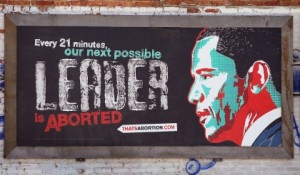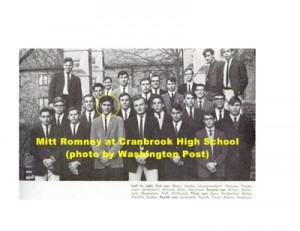I woke up this morning and began my usual routine of coffee and reading. I started with the Chicago Tribune and was jolted out of my pre-caffeine coma by the headline “11 Hurt in Shooting, Bus Crash.” On the south side of my city, two men had jumped from their vehicle, each wielding a large firearm, and opened fire on a black sedan traveling down the same street. This caused an accident when the black sedan slammed into a city bus, and innocent commuters came face-to-face with the violence that plagues the area.
Next, I came across the story of Timeica Bethel, a senior at Yale University who grew up in the LeClaire Courts housing project near Midway Airport. Timeica came home to Chicago to visit the project, now being demolished, and shared memories of daily drug deals and a murder just outside her front door. “Bethel shrugged off the violence,” the article said, “because…’I thought that happened everywhere.’” The story details her childhood and her progression to the hallowed halls of Yale University. The comments on the story all congratulated Timeica, and it was clear that most readers were heartened by the article, their faith in the American dream restored.
But I sat at my computer struck by a deep malaise, unable to share the joy. I was happy for Timeica, but something gnawed inside of me.
Next, I scrolled through some of my favorite blogs. There my eye was caught by the words “Life Always”—an anti-choice group using public media space to communicate their message.
A month ago, Life Always erected a billboard in New York’s SoHo neighborhood which featured a young African American girl under these divisive words: “The most dangerous place for an African American is in the womb.” The photo was a stock image, obtained and used completely legally by Life Always, but the model’s mother objected to her daughter’s image being linked to the anti-choice rhetoric. Soon after the media attention picked up the controversy, the billboard was removed.
This morning I learned that Life Always is beginning a new billboard campaign in Chicago. On the south side of my city, Life Always will display images of President Barack Obama under the words “Every 21 minutes, our next possible leader is aborted.” I felt dizzy. The Obama image, the headline photo of a body on a stretcher next to the smashed-in black sedan, Timeica peering over the chain-link fence at her old home; they swirled together and I had to sit with these things, be still, and try to work out the striking juxtaposition.
It is true that African American women seek abortion at a much higher rate than white women. These numbers have been used for many years by anti-choice activists to paint pro-choice advocates as racist and practitioners of genocide. But I don’t think these numbers speak to the evil of the pro-choice movement. If anything, they speak to the blind spots, ignorance, and lack of compassion of the anti-choicers.
When you say that the most dangerous place for African Americans is in the womb, you are discounting the tragedies that befall many African American communities daily. You are valuing the potential life of a zygote over the realized life of a child, a teen, an adult. You are placing the potential of a zygote over the potential of a child already living, already dreaming, already suffering. If abortion takes away the next “possible leader” of the black community every 21 minutes, then inadequate schools and the strained and under-funded welfare systems fueled by class and racism, are choking any chance a child might have had to become a leader.
“But Timeica!” they say, “There are children like Timeica! She overcame it all.” Sure. And so did Oprah. And a handful of others. Yet I hesitate to call these success stories when they are newsworthy for the fact that they are so rare. When a white child from the suburbs enters an Ivy League School, we don’t call the press.
These examples distort our image of the inner-city and the problems youth of color face. With Timeica at Yale and Obama in the White House some folks want to proclaim a post-racial society. Ask the people riding the #75 bus this morning about that. Ask Timeica’s classmates that are still rolling the cycle of inner-city life. Timeica is still the exception. Obama grew up with access to resources most black children just don’t have.
Instead of recycling the statistics about black women and abortion, I think it’s time we start understanding them. Why don’t we ask black women why they are seeking abortions, rather than admonishing them with billboards in their neighborhoods? Before we can tackle the issue of abortion, we have to figure out why it’s so prevalent. Lack of sex education in school and at home? Few affordable contraceptive and reproductive health options? Let’s start with black women and trust what they have to say. Let’s start to paint a more encompassing picture than one adorable African American child or one successful political leader. Abortion is complicated, and its sources and effects cannot be summed up in clever, moralizing advertising.
Ignorance Writ Large,





Tuo11
2 Apr 2011Maybe, we should stop viewing them as “black women”. Especially when it comes to government, race is not even suppose to be considered. We should ask the questions your asking of all women who have abortions. I agree that abortion is a right citizens have, as long as we don’t define it as murder. Taking the rights of individuals is something that government does all too well.
Mary-Margaret McSweene
2 Apr 2011@Tuo11: I agree with you. One of the most powerful lines of discourse to me in the pro-choice movement is “Trust Women.” I was riffing on that well-worn quote, since this billboard is specific to the African American community. I wanted to touch more on this, but it seemed like it’s own post, but part of what I was getting at was also that black women’s bodies are heavily policed by society. This ad campaign is yet another finger-wagging and instruction to women of color.